Making Green Solutions
Converging classroom projects with the UN Sustainable Development Goals and Canada’s 2030 Agenda
When maker-centered, community-based learning meets the UN Sustainable Development Goals, the resulting projects can be deeply meaningful to the students who created them. See how Brilliant Labs in New Brunswick supports students’ “hopeful action to build a better world.”
Young people can have tremendous agency and voice in influencing solutions to community problems if we ignite their creativity with a socially responsible mindset, and equip them with the entrepreneurial and digital skills necessary to leverage tomorrow’s technology.
With young people today becoming increasingly troubled and anxious with climate change, environmental degradation, social inequality, and other challenges impacting our world, it is important that we support student-driven projects that engage with these issues.
In doing so, we also acknowledge their personal autonomy and identity.
What if we approached this by challenging our students to take a good look at their world and have them ask: What does my world look like? Is my world missing anything? How can I be a changemaker, innovator and leader? What can I do now that will lead to meaningful changes tomorrow? We can inspire bold new thinking by students and give them a time and place to exercise their creative problem-solving, with innovative use of materials and digital technology-related skills.
Over the past five years, Brilliant Labs has engaged youth in more than 401,862 learning experiences that inspire and empower them to make an impact by addressing the urgent needs in their school and community. This impact has been, literally, made by applying the instructional philosophy of maker-centred learning, in which students are invited to create meaningful artifacts of their own knowledge, interests, and passions.
We provide students with agency and a supportive learning environment where they are encouraged to integrate new techniques and technologies with familiar materials, all while constructing authentic solutions to problems they identified in their own communities. The prototypes they develop often become incredibly viable solutions to addressing our society’s most intimidating problems.
In partnership with the Department of Education and Early Childhood Development in all four Atlantic Canadian provinces, Brilliant Labs has worked with tens of thousands of teachers and hundreds of thousands of students in support of a maker-centered learning approach that fosters hands-on, experiential, and inquiry- and project-based learning in classrooms throughout Atlantic Canada.
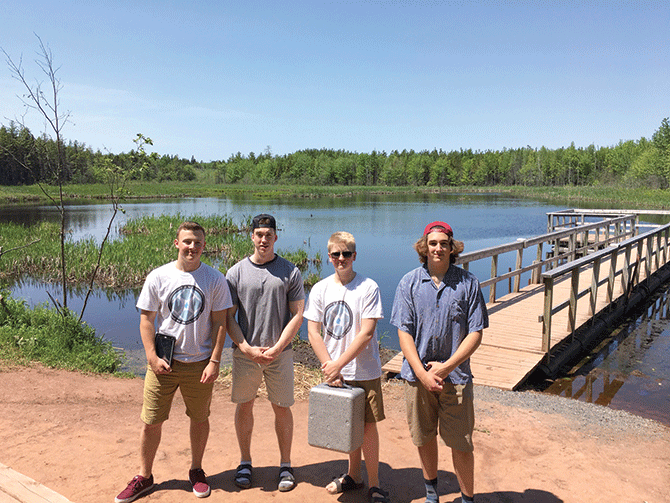
The UN Sustainable Development Goals
The United Nations’ 17 Sustainable Development Goals – also referred to as the SDGs or the Global Goals – were adopted by Canada and 192 other members states of the UN in 2015.
The SDGs universally apply to all countries, and cover a wide range of sustainability issues intended to build a better world for people everywhere and the planet. All the countries agreed to implement the SDGs within their own country in order to achieve the 2030 Agenda for Sustainable Development.
By highlighting local, national and international priority areas, the SDGs strive to end all forms of poverty, improve health and education, fight inequalities, make cities more sustainable, and tackle climate change, while ensuring that no one is left at a disadvantage.
Converging student-driven projects with the SDGs not only educates and engages them to support the Global Goals in real and meaningful ways, it also empowers them to transform that support into hopeful action to build a better world and contribute to Canada achieving its 2030 Agenda.
Bringing Design Thinking to the UN SDGs
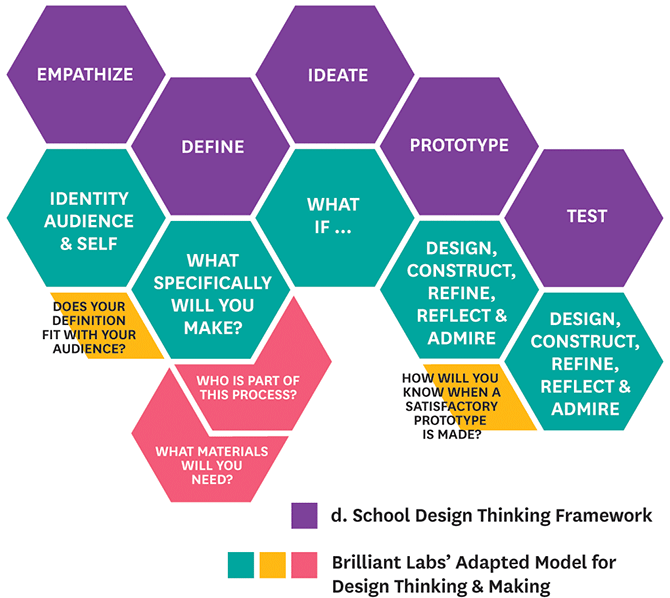
One framework that is particularly helpful when encouraging projects that address environmental sustainability is design thinking (see Figure 1). Popularized by the Stanford School of Design, design thinking can be used by students and teachers as an instructional methodology that brings some order to what can become a chaotic cycle of multiple iterations of their project throughout their design process. While Brilliant Labs provides support for students as they work through each component of the design and making process, it has been the empathize component of design thinking that has been most helpful in creating a culture of localized environmental literacy.
If your organization, school district or faculty of education is an EdCan member (see the list here), you can enjoy unlimited access to our online content! Click here to create your online account.
There are many interpretations of the design process, and it is important to remember that conforming your instructional practice to any framework that is not your own may constrain the creative actions makers take as they move through the iterative process and construct a prototype.
For this reason, we have developed our own interpretation of the Design Thinking Process entitled “The [blank] process of making brilliant things.” We hope that inserting a personalized name into the title will inspire a sense of personal agency in whatever process teachers and their students choose to bring their constructions to life.
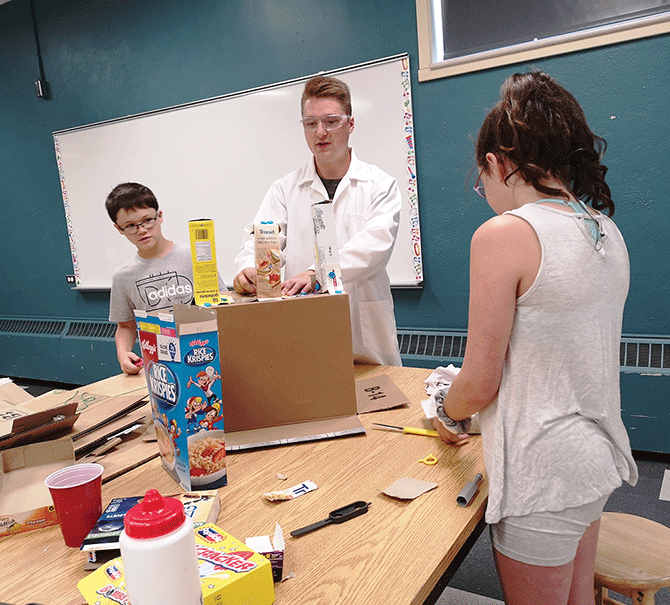
We use these descriptions when presenting our adapted model for Design Thinking and Making:
Empathize
It is enormously meaningful to understand the culture of your community, your own identity and the identity of your audience prior to jumping into any prototyping. This way your process will be refined to the needs of your end-users in your target community.
Define
Specifically, what is it that you will make?
It is important to know how your desire to make relates to the empathy you express for your community.
The definition of what you wish to make should be specific so that you can clearly communicate your intent with those same community members, for whom your project is intended.
Ideate
This component of the process is where your imagination will run wild.
To ideate means to imagine all of the possible implications and functions of your project.
Brainstorming outside of the definition of your project or the time you have allotted for your project during the ideate phase will ultimately lead you to an exciting project design that leads you to keep asking. “What if…?” We encourage this unbridled ideation!
However, it can be valuable to have one group member recognize when the ideas fall too far outside your definition to keep you on track.
Prototype
This is where you begin to make your ideas come to life.
Turn sketches into diagrams, with multiple views and precise measurements.
Discuss your ideas and design decisions with your intended community of end-users.
Live within the ambiguous constraints of low-cost construction materials like cardboard.
Embrace each prototype for the reflective opportunity its disposable nature provides.
Finally, never underestimate the value of any prototype. Time has a way of getting away from the best of us. Be proud of each of your prototypes.
Test
This phase may be at the end of the diagram, but in the design thinking and making process there is never an end – it is recursive, iterative, and ever-changing.
The testing phase is similar to deployment. Take your current prototype, demonstrate it to multiple groups of end-users, take notes, discuss the user experience and decide whether you want to cycle back to an earlier phase of your process (the answer is often yes).
Atlantic Canadian youth are truly empathetic to their local community’s sustainability challenges and their resulting projects inevitably become projected onto the larger challenges framed by the SDGs and Canada’s 2030 Agenda. For instance, a middle-school classroom decided to join a local campaign to solve their city’s hunger and nutrition issues. This group of students were not only interested in positively contributing to the food available to the hungry but to ensuring that this vulnerable group had access to healthy, locally grown produce. After days of brainstorming, these Grade 8 students decided to build a series of hydroponic flood tables to grow as much lettuce as possible in their school.
The students continually refined their design to maximize the growth as well as their contribution. Brilliant Labs became involved in this project when one student who was particularly interested in chemistry, gardening and coding, requested our assistance in developing an autonomous, electronic system that adjusted the pH of the nutrient-rich solution that became the essential component to maximizing their lettuce growth.
Integrating students’ projects with the SDGs localizes them in their community to make them real. This framework also provides engaging and creative opportunities to further cement student learning about how their local position can relate to one much larger: both globally and for their own learning.
When constructing projects that consider sustainability, students often authentically express a number of SDGs, as well as global competencies that are critical to establishing themselves as life-long learners.
The pan-Canadian global competencies outlined by Council of Ministers of Education, Canada are:
- critical thinking and problem solving
- innovation, creativity and entrepreneurship
- learning to learn/self-awareness and self-direction
- collaboration
- communication
- global citizenship and sustainability.
Examples of this in Atlantic Canada include students at all levels:
- Elementary school students: prototyped, then created a micro business for edible spoons to reduce fast food waste; challenged their schools to reduce waste by prototyping microcontroller-powered garbage cans.
- Middle school students: developed ecofriendly water filtration systems; prototyped new and innovative solutions to harnessing tidal power.
- High school students: designed and soldered circuit boards and created 3D printed housings for solar-powered high-efficiency lights (Engineering Brightness program); worked out of the Idea Centre in Saint John, N.B. to prototype car exhaust refinements in collaboration with NASA.
Students in an Environmental Studies class at Fredericton High School developed a project in support of SDG Goals 15 (Life on Land), 14 (Life Under Water), and 6 (Clean Water and Sanitation). While learning about wetland ecosystems at Corbett Brook Marsh (a 3.64-hectare forested wetland), they combined drones, microcontrollers, 3D design and printing, robotics, and coding to collect water samples in a hard-to-reach wetland without further damaging the local ecosystem. The student-created prototype featured two detachable platforms that carried four test tubes and a sensor. When the drone came within 10 cm of the water surface, it automatically triggered a robotic mechanism that filled the test tubes with water.
The project was a success, tying for first place at the Regional Science Fair at the University of New Brunswick and also catching the attention of local conservation and technology communities. Ducks Unlimited Canada purchased a new drone for the school, with funding from the New Brunswick Environmental Trust Fund. The project not only far exceeded everyone’s expectations, it provided a creative, problem-solving opportunity for students to learn how to apply their unique interests, skills and talents in a meaningful way.
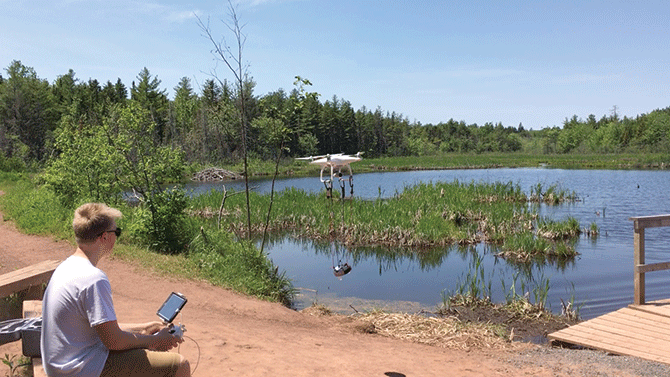
Taking action
As students work to provide sustainable and environmentally responsible solutions within their schools and communities, we have a tremendous opportunity to engage them with the UN SDGs to develop their global competencies and support Canada’s 2030 Agenda for Sustainable Development.
Connecting students with projects and purposeful technology in an authentic and impactful context not only sparks learning through action, but will go along way to creating innovative solutions to complex and urgent problems, and develop a growth mindset.
Brilliant Labs is looking forward to continuing to support students, teachers and educators along this journey as we engage our young people to boldly solve real problems with innovative technologies. Our youth are the biggest and brightest hope to improve the lives of people everywhere and transform the world by learning about the SDGs and mobilizing Canada’s 2030 Agenda.
About Brilliant Labs
Formed in 2014, Brilliant Labs is a not-for-profit, hands-on technology and experiential learning platform based in Atlantic Canada.
In converging student-driven projects with the SDGs, our vision is to provide every child in Atlantic Canada, and beyond, with the opportunities to access, learn, and leverage new technologies and programming to create, innovate and inspire solutions for a sustainable and environmentally, socially, and entrepreneurially responsible future.
Resources
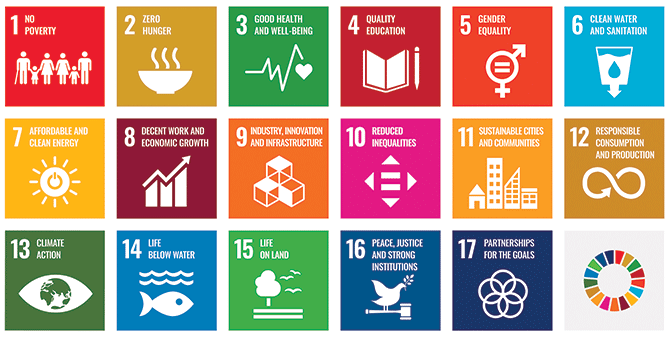
The following resources will help you engage your students with the UN Sustainable Development Goals:
- See the SDG targets and inspiring videos on Global Goals. www.globalgoals.org
www.youtube.com/channel/UCRfuAYy7MesZmgOi1Ezy0ng
- Watch a free one-hour #TeachSDGs course from Microsoft Education. https://education.microsoft.com/courses-and-resources/courses/SD
- Visit Brilliant Labs’ website to see SDG-focused projects to get ideas for potential projects in your classroom. www.brilliantlabs.ca
- Find helpful lesson plans for all ages in multiple languages. http://worldslargestlesson.globalgoals.org/
- Build a network – join “Alliance 2030” and share the work of your students “to build a better Canada and a better world with no one left behind.” https://alliance2030.ca/
- Pledge to teach SDGs and amplify the work of your students globally by joining the #TeachSDGs movement, featuring over 250 global ambassadors and tens of thousands of engaged educators. www.teachsdgs.org
- Engage with the UNESCO Associated Schools Network and the Canadian Commission for UNESCO. https://aspnet.unesco.org/en-us
https://en.ccunesco.ca/networks/associated-schools-network
- Encourage global competencies in your students – critical to achieving SDGs. www.un.org/youthenvoy/2015/07/global-competence-amongst-youth-critical-achieve-sustainable-development-goals
Photo: Courtesy Brilliant Labs
First published in Education Canada, March 2020
